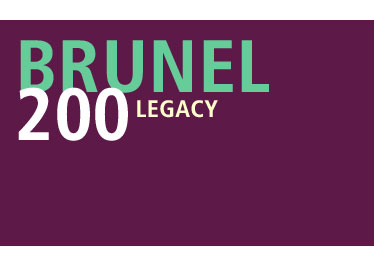|
|




30 participants
– May 2006
|

This residency built upon an
existing relationship between Toby Hulse and the History Co-ordinator
at Perry Court. It meant the project could act as a pilot for assessing
history learning through the pupils’ creation
of a drama exploring Brunel and the Victorians.
The project grew from a
visit to the Brunel and the Art of Invention exhibition at Bristol City
Museum & Art Gallery.
Children responded to the paintings on display, selecting favourites
and exploring the stories they encapsulated. They took on the directorial
roles and produced drama with classmates that expressed the social
history within the paintings. This project had a big impact on all
involved stretching the children and resulting in powerful drama that
was shared with the rest of the school.
Helen Barbour, teacher at the school,
commented:
“The productions were exciting, engaging,
at times humorous and at times very emotional. As a teacher the most moving
thing was seeing the creative power of very 'ordinary' children brought
truly alive with magical results.
The Brunel week at Perry Court
was given a huge lift by the creative input of Toby Hulse. While the other
year groups focussed on Art, D &T,
Music and Literacy activities linked to Brunel, Year 6 were given the
inspiration to prepare something quite different related to Brunel, using
Drama. The most exciting thing about this project was that Toby let the
children create the product themselves, taking it in any direction they
wished.
It started at the City Museum, at a very small exhibition with portraits
and objects related in some way to Brunel. The 15 children, who had been
selected for their imagination and theatrical sensibilities, were encouraged
to find one item that interested them, and in which they could see the
potential for drama. Through subtle nudges and gentle discussion, Toby
got the best out of this research stage, and all the children came away
with copious notes, drawing and plans for their piece of drama. I will
certainly use this technique of using small elements of pictures and
photos to create writing and drama in the future; it was extremely powerful.
What
we ended up with at the end of the week was several sketches, bringing
characters in portraits to life; still tableaux with voice-overs; a dance/drama
metaphor in which the iron ship was the builders' master; a piece of shadow
puppetry using an overhead projector with Brunel as a dragon-slayer, and
a dramatic radio play, in which 2 ships collide underneath the Suspension
Bridge. All entirely conceived, written, acted and directed by the 11 year
old children themselves. The productions were exciting, engaging, at times
humorous and at times very emotional. As a teacher the most moving thing
was seeing the creative power of very 'ordinary' children brought truly
alive with magical results. Thank you Toby! As a man who had a huge
imagination himself I suspect Brunel would have loved it!”
The children’s
feedback shows how much they enjoyed their week:
“I found working with Toby fun and exciting.
I directed the play the first time. So I felt nervous and excited at the
same time. Usually I don’t like standing up and talking but this
time I felt confident….
It was the best day ever.”
“I loved doing the play because I enjoy drama and I liked it because
I had to scream and I couldn’t stop laughing after!”
“I think directing my animation with Toby gave me more confidence
in writing and directing. The trip to the Museum with Toby was fun and
educational and inspired my imagination to make my animation. The picture
that inspired me was an industrial picture that Toby showed me. I found
Toby was very good at helping to adapt ideas to make them reality for
the animation. It’s fun to work with Toby because he makes you
laugh and gets you motivated to do your work. Toby also comes up with
loads of facts about the subject and he does great examples of what you
are doing and how to do it.”
Toby Hulse feedback:
“The aim of the project was to give pupils
the opportunity to build on previous learning in drama, in particular
playwriting, using a stimulus related to the Brunel 200 celebrations.
When I worked with these children last year we dramatised a short story
by Hans Christian Andersen as a collaborative process - the children
working within a framework and methodology that I provided. I was very
interested to see if the same children were able to apply the same
way of working in a more independent context, and in response to a
visual rather than text based stimulus.
The two classes were divided into two - the first group leading the project
as writers and directors, the second larger group working under their
supervision to create the pieces of theatre. The first group were chosen
after a forty five minute workshop introducing a method of generating
ideas from a visual stimulus. I was looking particularly for children
with strong visual literacy skills, powerful imaginations, the confidence
to take risks and the ability to communicate clearly to their peers.
The 15 children chosen were a fascinating mix of academic and social
ability, several of whom had probably never taken on such high profile
responsibilities.
This group were then taken for a morning to the Brunel
and the Art of Invention exhibit at the City Museum. This was an ideal
stimulus, being rich in ideas but small and self-contained enough not
to be daunting. The children were encouraged to note any ideas that came
to mind in whatever form seemed appropriate, in particular those which
generated stories. The range of ideas was quite extraordinary, from the
historically accurate to the wildly fantastic, and it was particularly
gratifying to see children of this age spend such concentrated amounts
of time in front of what at first glance must have seemed disappointingly
dull Victorian paintings. The function of the adults in the group was
to begin to join ideas together and to encourage talk and discussion
right across the fifteen children.
The subsequent work involved the core
group translating their ideas into pieces of theatre and, in one case,
a film. Here it quickly became evident that the children had learned a
lot from my previous visits, as they confidently employed workshop, writing
and directing techniques that I had used with them. My main role was (sadly)
to limit ambition so that the work planned fitted into the time and resources
available and to provide additional stimulus to the work, usually in the
form of anecdotes about theatre pieces I had seen. The core group worked
well with the second group, handing out roles and responsibilities with
great care and fairness, and understanding the importance of inclusion.
The resultant pieces were surprising, witty, moving and eccentric by
turns, performed with great confidence in front of the rest of the school.
Several showed an excellent understanding of the historical and cultural
thinking behind the project and the exhibition, several showed an imaginative
and empathetic engagement with the period, and all demonstrated lively
creativity and a sense of joy in learning. In all a very successful project.”
|
|

